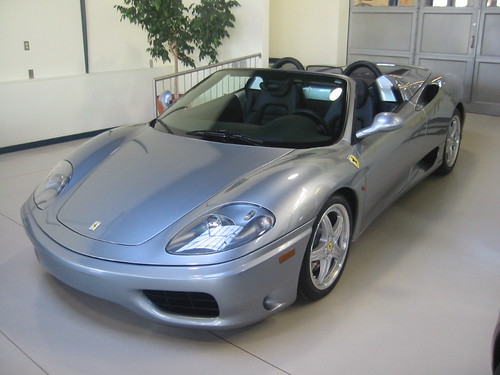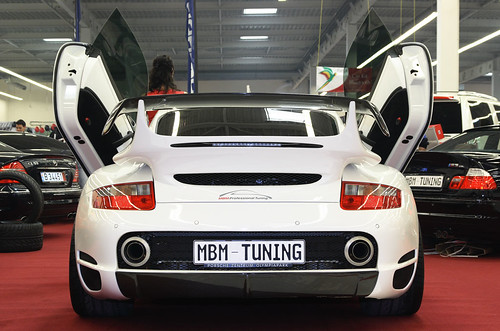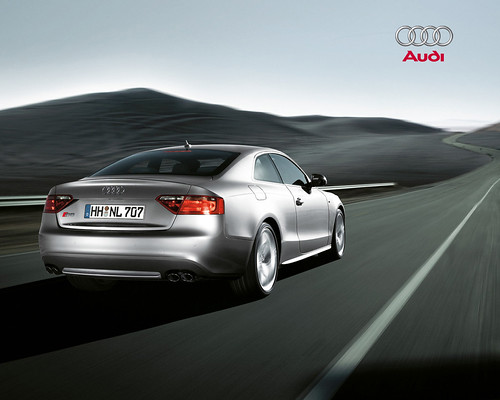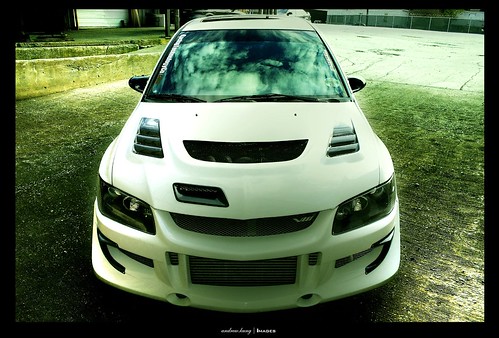New Honda Civic Type-R Sedan!








This new Civic Type R was developed to make the driver feel at one with the car for the ultimate driving experience in all driving conditions, even for track use. Equipped with a specially tuned 2.0-liter normally aspirated engine matched to a 6-speed manual transmission, it promises an engaging drive. A lighter, more rigid body shell, specially tuned suspension, 18-inch tyres and large 17-inch front disc brakes contribute to the Civic Type R’s ability ensures this. Newly developed aerodynamic devices further enhance high-speed performance while giving the wide and low form a more aggressive look. Front bucket seats, a unique instrument panel and other performance accessories contribute to a high performance experience.Type R models are specially tuned to take full advantage of the potential of the base model and provide a racing car-like driving feel. First offered on the NSX in 1992, the Type R range was extended to the Integra in 1995, and the Civic in 1997. This latest all-new Civic Type R is the distillation of 15 years of technological progress and the latest expression of Honda’s “Challenging Spirit.”
The exterior employs a pure sports one-motion form design with aerodynamically advanced surface treatment and sharp edges. Newly developed aerodynamic devices include a large air intake in the front bumper and grille, a rear bumper with built-in rear diffuser, a high-mount rear spoiler, and extended side sill garnishes, giving the car an aggressive overall appearance.
The overall black colour scheme gives the interior cockpit a racing car-like appearance, bringing the driver closer at one with the car. The front bucket seats are specially designed for Type R. Separate centre plus side construction with high side bolsters and optimized cushion rates help hold the body in place, helping the driver concentrate on driving.
The multiplex i-VTEC engine revolution indicator alerts the driver that engine speed is approaching maximum allowed revolutions. Self-illuminated, lit with red-colored flashing lights and is strategically located for minimum eye movement in circuit and other high speed driving conditions.
Other performance-oriented features include a small-diameter, genuine leather oval steering wheel, an aluminum ball-type shift knob, a short stroke sports shift linkage, metal sports-type pedals and footrest, and a separate, button-type engine starter.









Engine:
A higher compression ratio and improved breathing efficiency help the naturally-aspirated K20A 2.0L i-VTEC engine output a maximum of 225PS @ 8,000 rpm and a maximum torque of 215Nm @ 6,100 rpm. NSX production methods contribute to smoother port surfacing, improving intake/exhaust airflow. Drive-By-Wire (DBW) provides for finer tuning of throttle response and power output.
Optimum tuning of intake and exhaust manifolds provides for high output at high engine speed while also improving torque characteristics over a broad engine speed range.
• A close-ratio 6-speed manual transmission is matched to the Type R engine.
• Optimized gear ratios offer superior accelerations at high speeds, providing exhilarating performance.
• New features include a highly rigid aluminum transmission case while the addition of a baffle plate helps mitigate oil starvation at high cornering speeds.
• A short stroke shift linkage contributes to a sporty shifting feel.

• The highly rigid Civic body and its advanced layout serves as the basis for an even more highly rigid, yet lightweight Type R body. Measures to enhance body rigidity while reducing weight have translated into a body that is 50% more rigid than in the Integra Type R of model year 2001 to 2006.
• Specially tuned suspension, high performance 18-inch tyres, a torque-sensitive helical limited slip differential, large disc brakes for improved fade resistance and other performance-enhancing features contribute to higher cornering performance and stability.
• The specially tuned suspension boasts revised spring and damping rates, and thicker stabilizer bars for improved vehicle stability.
• 225/40R18-sized high-performance Bridgestone Potenza RE070 tyres.
• Brembo 17-inch disc brake with 4-pot aluminium front calipers.
• Specially-tuned ABS/EBD system.
• Special lightweight 18-inch aluminium wheels are matched to black wheel nuts.
Formula One Testing: Sepang 2007
On the 2nd day of testing, Ferrari clocked the fastest lap with none other than Kimi Raikkonen helming the scarlet red car in at 1:35.258. William’s Alexander Wurz was second fastest in 1:35.702 while David Coulthard was third quickest with Red Bull Racing in 1:35.712.
Team Honda Racing troubles – primarily a rather uncompetitive car this season - are far from over when Rubens Barichello blew an engine during the morning session.
From these test sessions timings, it looks like Vodafone McLaren Mercedes and BMW Sauber are going to have to play catch-up to the prancing horses on race day come 8th April 2007.
This first-ever official testing in Sepang is into its last day today.
Update: Formula One testing at Sepang was extended by another day to 30th March 2007, upon collective request of all F1 teams on testing.
Shootout: Mercedes-Benz E200K vs E200K!
However, it is realized soon enough that the trademark Mercedes grille is more pronounced, bolder and has a sharper profile. Though more imposing with a larger meshed surface, this is one redesign exercise which can split opinions. So is the fussier contoured front bumper with a sharp beak in tandem. Chromed rubbing strips are more flushed with the redesigned bumpers – especially noted as one uninterrupted horizontal piece at the rear. Rear number plate chrome garnish and redesigned tail lamps are subtle but still telling of an update. Conversely, the third brake light is composed of (lesser in numbers?) LEDs in punctuated sequence now.
Headlights are more distinctive now with triple louvres in the signal repeater section. Visually more refreshing with an added ‘alertness’ to its big eyes. At night, this upper section gets lighted up as well, thanks to the internal refraction afforded by those louvres. Previously the main beam headlight looks a little droopy at night.
Interiorly, the driving wheel has been nicked from the CLS-Class with better (more tactile) on-steering multifunction buttons. Floor mats are now fine velour type, in–cabin colour schemes of a more distinct two-tone while the key-fob is of the premium Designo-type as standard. The gear lever/knob is more sporty and youthful in appearance now.
.jpg)
.jpg)
.jpg)

Engine:
While the M271 4-cylinder 1.8L engine is carried over, it is now an all-aluminium block with improved supercharging and a remapped ECU. Power output is boosted to 184hp @ 5,500rpm (163hp @ 6,000rpm previously) and torque is now a useable extra 10Nm to 250Nm @ 3,000 – 4,000rpm.
With the tester having done in excess of 5000kms on the odometer, the engine was pleasantly smoother and slightly more willing than the ‘older’ pre-FL motor. While the extra horses could be felt on the motorway, it is the lesser Kompressor “lag” that impressed me. This uprated powerplant pulls convincingly from around 2,000rpm onwards versus circa 2,500rpm before.
Throttle response is also marginally better, ensuring its associated powerband kicking in sooner, making this facelift model more tractable at low speed.
On the outside, the Kompressor scrolling ‘noise’ at idle is lesser now (perhaps it was still new?) but a definite change is the lower frequency (bassy) exhaust note plus its stronger waste gas blow, both also at idling.
Gearbox:
No differences noted since the same 5 A/T ‘box is retained.
Performance:
0-100km/h: 9.3secs (as tested, average)
Top speed: 225km/h (claimed)
Steering:
The recalibrated rack feels lighter at parking speed. Maybe it was due to skimpy OE Goodyear 16” tyres. It has sharper turn-in into corners but didn't feel exceedingly quicker, even though lock-to-lock turns are lesser now. Feedback more or less the same as before but I am pretty sure things would improve considerably with upsized imported rubbers.
Brakes:
SBC has been tossed out in favour of a less advanced but allegedly more reliable Adaptive Brakes. Pedal has a relatively loose feel to things now but modulation is still good. Effective as well as reassuring stopping power. No more SBC pump groaning away in the engine bay.
Road-holding/Handling:
Fluid handling into bends with sharper steering response. Tracks cornering line more faithfully now, with lesser tendency to understeer – nice! Car feels similarly planted as before at highway speed as its ‘predecessor’. Lane change was a little wobbly –a wee bit like on stilts - at the wheels, likely those puny and noisy NCT5s at fault.
Ride:
Just as comfortable with smooth wafting over poor road surfaces. Even at slow speed, ride quality remains calm and composed. This is undeniably an MB’s forte through the generations.
However, ride height is lower now with notably lesser wheel arch clearance at the rear. I reckoned this is E-Class Avantgarde (non-Airmatic) suspension having trickled down to the facelift Elegance model now. Strongly hinted by the fact that the suspension (especially at front) has that strange clunking sound over road humps, especially during those marginally quicker glides.
Fuel consumption:
Based on the trip computer data, the FL version seemed significantly thirstier, albeit the better torque spread for a hilly B-road drive makes it justifiable. It recorded an FC figure of 14.5L/100km vs 10.5L/100km. But then again, maybe the winding road test drive was more spirited and all. On the highways though, fuel consumption remains unchanged averaging 9.5L/100km, similar as the pre-FL model.
Instruments and control:
The stalked wing mirrors has a wider field of vision now, though aesthetically much like an after-thought, being mounted on the ‘old’ door/window frame. Still lacks that seemingly premium (at least in Teutonic list of standard equipments) feature of foldable wing mirrors – so baffling! Auto-dimming function still missing from the left rear-view mirror.
Turn signal stalk has a more tactile – firmer springing action - feel on flicking.
Rotary headlamps switch now placed in a contrasting black patch, instead of following dashboard tone.
Equipment:
No extras compared to the previous model. In fact, it has lost fully auto-electric-with-memory seat for the front passenger. Absence of HIDs headlights is equally disappointing for a car asking for RM350K, especially when an entry level junior exec from BMW camp has bi-Xenons! What’s the story here DCM?
Also, where is that anterior-most piece of engine cover (the engine now looks like the previous C180K Classic's) ?
Safety:
List of acronyms like ABS, BAS, ESP, Neck-PRO, Pre-SAFE, 6 SRS Airbags says it all.
Quality:
Though CKD, the E200K FL built, paint and finishings acceptable.
Value:
Definitely better value now with an improved engine, retuned suspension, sharper rack.
Kit count could be better.
Still pricey for a mid-sized executive saloon but solid 3-pointed star image of prestige and luxury unshakeable.
Key changes of the E200K Facelift:
Interior updates:





 In conclusion, the E200K FL is definitely a worthy consideration for those looking for a capable all-rounder of a luxury executive saloon. It will carry the 3-pointed star torch well lit – seeing that it has a claimed 2,000 parts improved or changed – up until its full model replacement (W212) in 2009.
In conclusion, the E200K FL is definitely a worthy consideration for those looking for a capable all-rounder of a luxury executive saloon. It will carry the 3-pointed star torch well lit – seeing that it has a claimed 2,000 parts improved or changed – up until its full model replacement (W212) in 2009.Test car courtesy of Cycle & Carriage Bintang (CCB).
Lot 19, Jalan 51A/219, Federal Highway
46100 Petaling Jaya, Selangor.
Tel: +603 7872 8000
Fax: +603 7872 8001
CCB Mutiara Damansara
No 16, Jalan PJU 7/5, Mutiara Damansara,
47800 Petaling Jaya.
Tel: +603 7727 3213
Fax: +603 7727 2732
CCB Ampang
Ground Floor-A, Regal House,
No 1, Jalan U-Thant,
55000 Kuala Lumpur.
Tel: +603 2144 9999
Fax: +603 2144 9944



























































